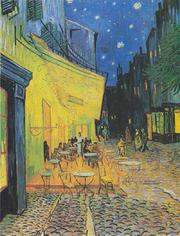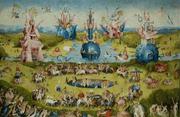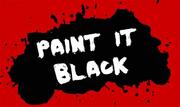Dreamcatcher Meaning: History, Legend & Origins of Dream Catchers
BY K Shabi Updated 04 Oct 2021 PUBLISHED 14 Jul 2016
What is the true meaning and history behind the Native American dreamcatcher? Where do dreamcatchers really come from? You've probably seen a dream catcher hanging from a tree, a porch or even in a souvenir gift shop and wondered about its purpose and hidden meaning. Read on to learn more about the story, legend, and origins of authentic Native American dream catchers.

Authentic Native American Dream Catchers: What are they made from?
What are dream catchers? Originally created by American Indians, dreamcatchers today come in a variety of different sizes and styles. They usually consist of a small wooden hoop covered in a net or web of tough, natural fibers, with meaningful sacred items like feathers and wooden beads attached, hanging down from the bottom of the hoop. Authentic, traditional dream catchers are not plastic, but handmade and crafted only from all natural, real materials and measure just a few small inches across in size.
Authentic dreamcatchers are made from materials that also carry deep meaning and significance in Native American culture, starting with the sacred hoop. The dream catcher hoop is usually made from wood, traditionally constructed from a bent Red Willow branch. Known as Cansasa to the Lakota tribe, Red Willow bark is a spiritually important plant and herb within First Nation cultures. It is often used during times of celebration and ceremony to show respect. Like dreamcatchers, Red Willow is also thought to offer spiritual protection. The dreamcatcher web or net is traditionally woven from stretched sinews, tough and fibrous, most likely left over from animal game hunted by the tribe for food. Having a deep foundational respect for the natural world, Native Americans traditionally use all parts of the animal so nothing goes to waste. As a finishing touch, the frame of an authentic dream catcher may also be wrapped in scrap leather or animal hide.
Meaning & History of the Dreamcatcher: Ojibwe or Lakota Origin Story?
Today the dreamcatcher is broadly associated with Native American culture in general, but where did the idea originate? Ancient legends about the history of the dream catcher exist today among several Native American tribes, particularly the Ojibwe and Lakota nations. The Lakota tribe, also known as the Teton Sioux, has its own origin story and legend about the dreamcatcher, but most ethnographers now believe dream catchers originated from the Ojibwa Chippewa tribe, an Anishinaabe people from the area that is currently southern Canada and the northern Midwestern United States. Dreamcatchers were passed down from the Ojibwe to the Lakota through intermarriage and trade. The Ojibwe word for dreamcatcher asabikeshiinh actually means "spider," referring to the woven web that covers the dreamcatcher hoop. The patterns of the dream catcher web are similar to the webbing the Ojibwa tribe also used for making snowshoes to wear in winter.

Bureau of American Ethnology Bulletin (1929)
Ojibwa Legend: The true meaning and story of the Dream catcher
Spiders are important to understanding the true meaning of dream catchers. While many people and cultures today consider spiders to be creepy crawlers, the Ojibwe tribe saw these insects in a much different light. Not finding them gross or scary, the Ojibwe saw spiders as natural guardians of the home and symbols of protection and comfort. According to an old Ojibwa legend, a mystical and matriarchal "Spider Woman" once served as the spiritual protector for her tribe. A maternal figure, The Spider Woman was especially protective of babies and young children. According to the legend, it was difficult for The Spider Woman to continue to protect her people as they flourished and spread out across the land, migrating farther and farther away. This is why she created the very first dreamcatcher with its meaningful woven spiderweb. Following her example, over the course of generations mothers and grandmothers continued to ritualistically recreate the maternal keepsake as a way of spiritually guarding their children and family, even if separated by a great distance.
What do dream catchers do? The Purpose & Meaning of the Dream Catcher
Sometimes referred to as "Sacred Hoops," Ojibwe dreamcatchers were traditionally used as talismans to protect sleeping people, usually children, from bad dreams and nightmares that might disturb them while they were vulnerable and asleep. The Ojibwa tribe believe that the night air is filled with dreams, both good and bad. The dream catcher attracts and catches all sorts of dreams, nightmares and thoughts into its protective woven spiderweb. Good dreams can pass through the sacred hoop and gently slide down the feathers to comfort the sleeper below. Bad dreams, however, are caught up in its net and destroyed, burned up in the light of day. For this reason, dreamcatchers traditionally must be hung above the bed in a place where morning sunlight can reach it.
Dream Catcher Meaning: Spider Web, Feathers & Wooden Beads
All parts of the authentic Native American dreamcatcher have meaning tied to the natural world. That is why real dreamcatchers are traditionally made only with natural materials. The shape of the dreamcatcher is round because it represents the circle of life and its natural cycles like the movements of the sun and moon as they travel each day and night across the sky. The dream catcher web is symbolic of the spiderweb and catches the bad dreams during the night and disposes of them when the day comes. As for the good dreams, the feathers act as a fluffy, pillow-like ladder that allows them to gently descend upon the sleeping person undisturbed. There is some debate when it comes to the meaning of the beads that traditionally hang from the bottom of the dreamcatcher. According to some American Indians, the beads symbolize the hardworking spider weaving its protective web. Some believe the beads represent the original Spider Woman. Still others believe the beads are the good dreams that could not pass through the spider web, immortalized forever in the form of sacred charms.
Dreamcatcher Meaning Today: Authentic Symbol or Cultural Appropriation?
Though dreamcatchers are quite common, finding real authentic dreamcatchers is not that easy today. Real handmade dream catchers are typically small in size and feature sacred charms like real feathers and wooden beads. Most dreamcatchers that you will find in souvenir shops today are often oversized and constructed from cheap plastic materials. Many Native Americans still consider the dreamcatcher to be an enduring symbol of unity and identification among the many Indian Nations and First Nations cultures. However, many others have come to see dream catchers as another form of cultural appropriation, over-commercialized and at times offensively misappropriated and misused by non-Natives. What do you think?







